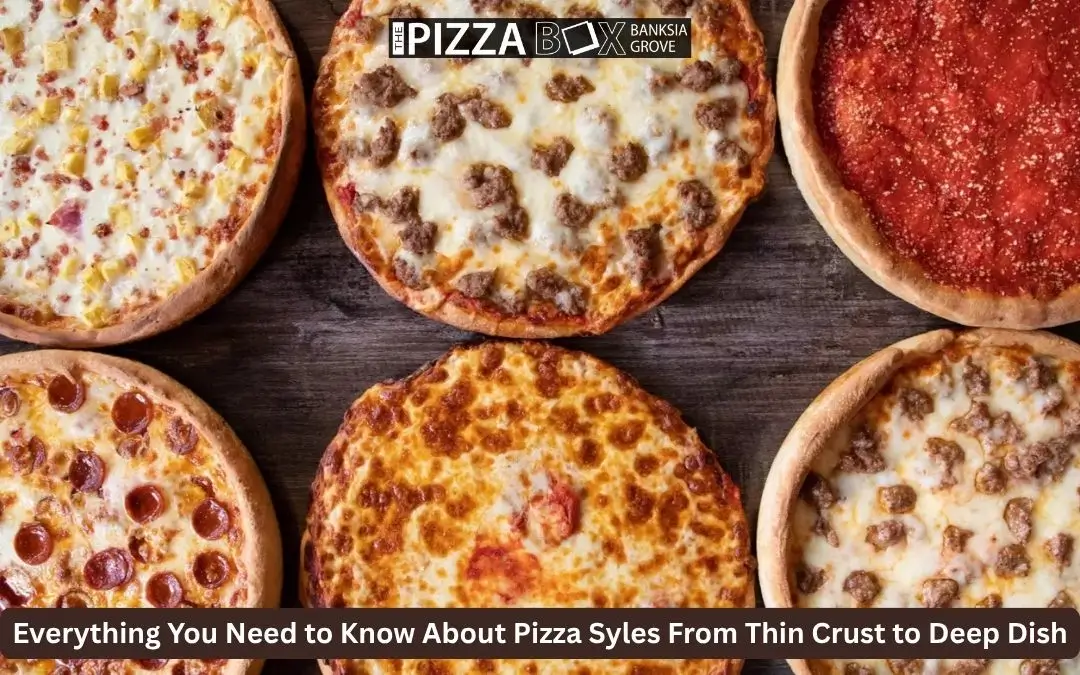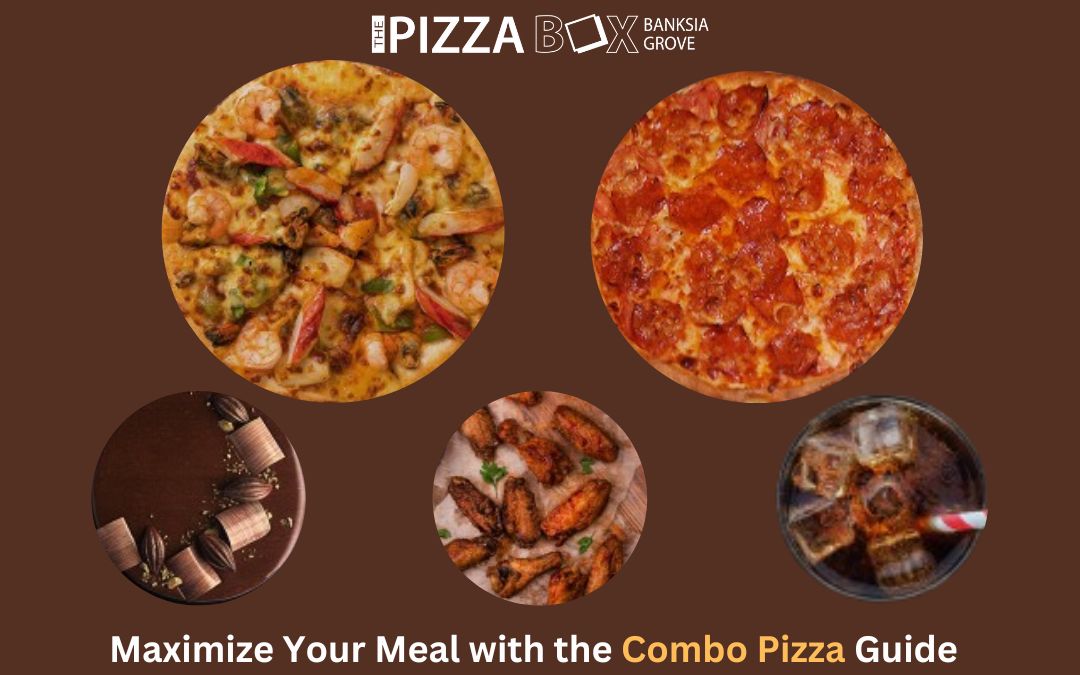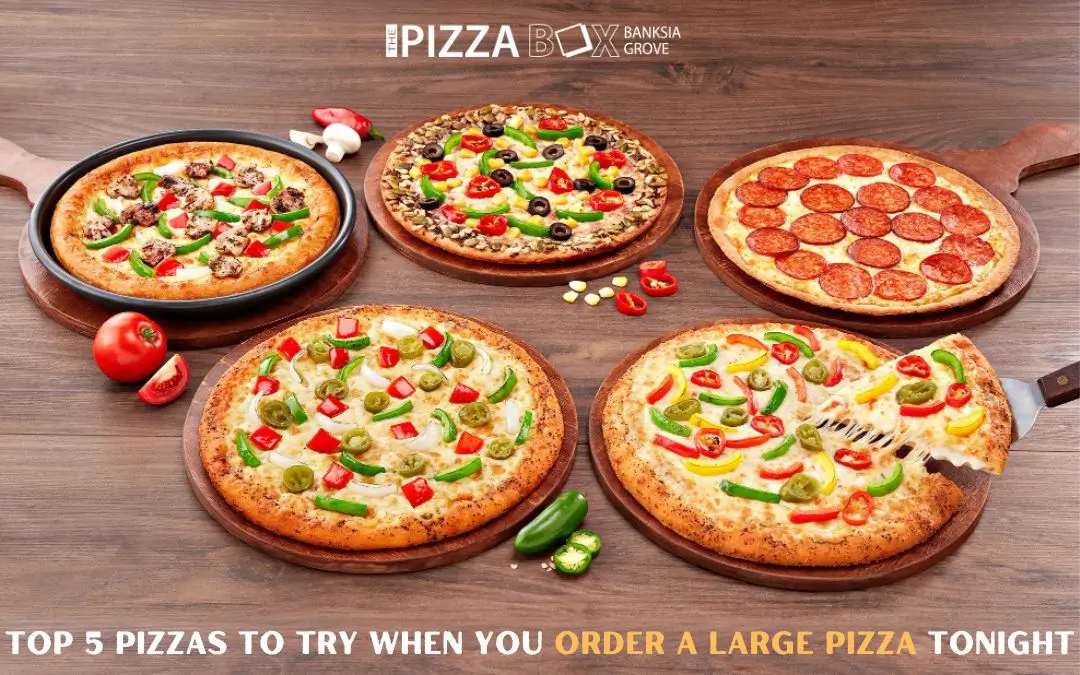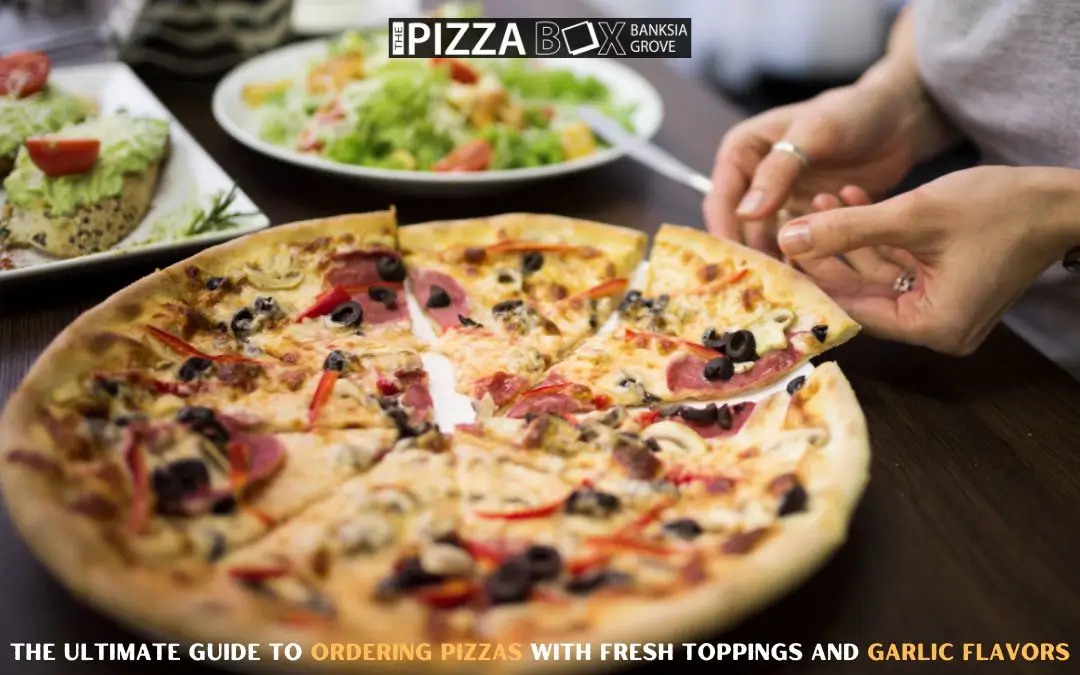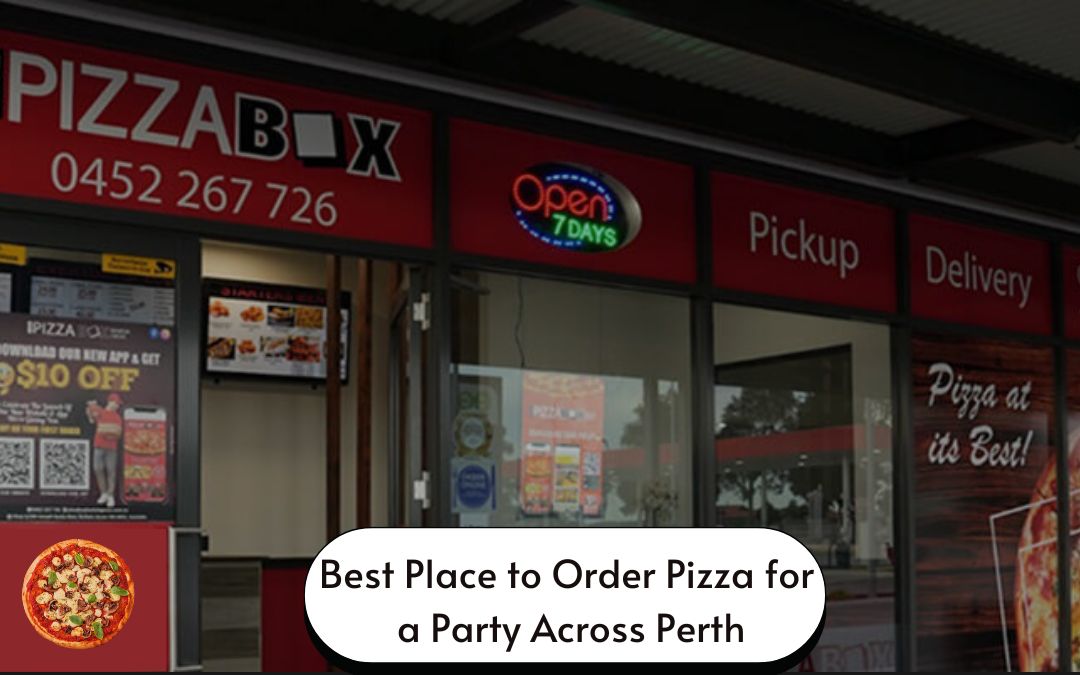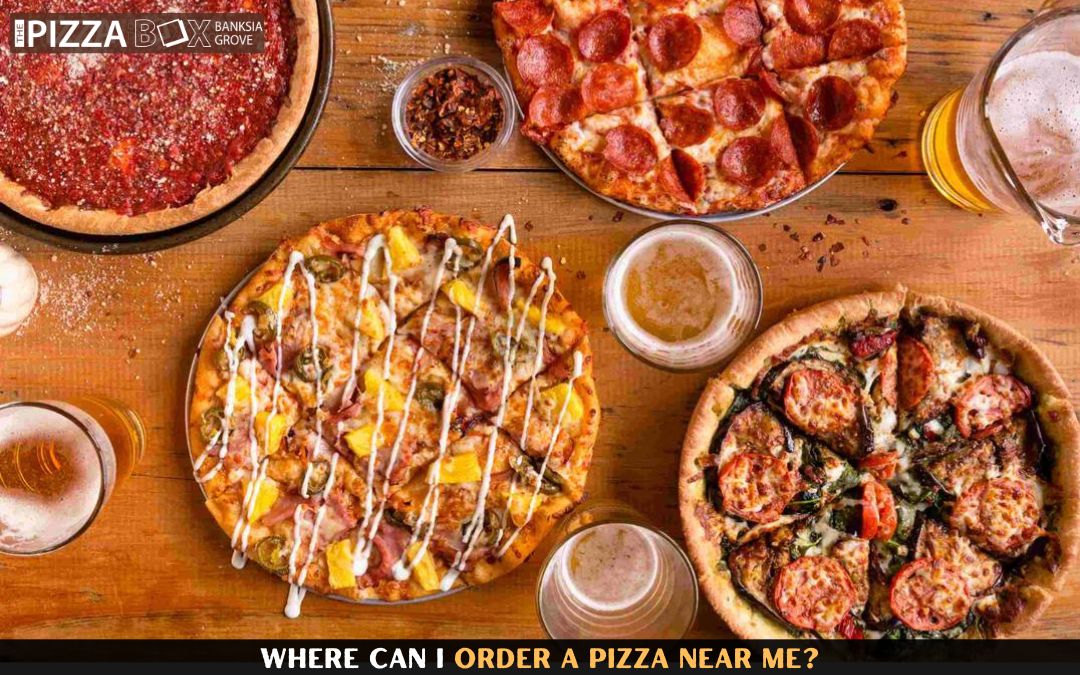Pizza is one of the most loved dishes around the globe. It’s comforting, customizable, and endlessly delicious. But not all pizzas are the same. From the paper-thin, crispy bite of Neapolitan pizza to the thick, cheesy layers of Chicago deep dish, every style brings something special to the table.
Whether you’re ordering pizza from Pizza Box Banksia Grove, experimenting at home, or exploring new flavors, understanding the different pizza crusts, toppings, and sauces helps you find your perfect match. With local pizza delivery from a reputable restaurant, you can enjoy your favorite pizza.
Think of pizza styles as a spectrum: light and airy on one end, thick and hearty on the other. And in between lies a world of flavor.
Pizza Crust: The Heart of Every Slice
The crust is more than just the base, it’s the backbone of every pizza. The type of crust determines the texture, flavor, and how the toppings come together. From thin and crisp to thick and fluffy, the crust is what sets each pizza apart.
Thin Crust vs Thick Crust
-
Thin Crust Pizza: Light, foldable, and often slightly crisp around the edges. This style includes favorites like Neapolitan and New York-style pizzas. Thin crust lets the sauce and toppings shine without feeling too heavy. It’s perfect if you love a balanced bite with just the right crunch.
-
Thick Crust Pizza: Soft, airy, and built to hold generous amounts of cheese and toppings. This includes Sicilian and Chicago deep-dish pizzas. The base is thick and bread-like, ideal for hearty sauces, layers of melted cheese, and unique toppings.
How Dough Shapes the Flavor
A truly great pizza crust comes down to simple but quality ingredients and time.
-
Flour: High-protein bread flour creates a chewy New York-style crust, while finely milled Italian “00” flour gives Neapolitan pizzas their signature airy puff and light texture.
-
Water & Hydration: A higher water content results in a lighter, airier dough. Less water gives a denser, bread-like texture.
-
Time: Letting the dough rest for 24 to 72 hours through cold fermentation builds incredible flavor and texture.
-
Heat: High, even heat gives the crust that beautiful golden color and crisp base.
When the dough is made with care, you can taste it in every bite.
Variety Pizza Toppings: Where Flavor Meets Creativity
Once the crust is ready, it’s time to build flavor. Toppings are what make each pizza personal. Some people love keeping it classic, while others enjoy bold, unexpected combinations.
Classic Topping Combinations
-
Pepperoni and Mushroom: A perfect balance of spicy, salty, and earthy flavors.
-
Sausage and Bell Pepper: A hearty, savory mix that works beautifully on thick-crust pizzas.
-
Margherita: A timeless favorite with tomato sauce, fresh mozzarella, and basil. Simple but packed with flavor.
How to Layer Toppings for Best Results
The way you layer your ingredients makes a huge difference in how your pizza bakes and tastes.
-
Sauce First: Spread your sauce evenly on the dough to prevent it from getting soggy.
-
Cheese Layer: Add a layer of cheese on top of the sauce to lock in moisture and create a melty base.
-
Heavier Toppings: If you’re adding sausage, sliced tomatoes, or vegetables with moisture, place them under the cheese. This keeps the crust from becoming wet.
-
Light Toppings: Pepperoni, mushrooms, and onions work best on top of the cheese, where they crisp up during baking.
-
Fresh Herbs: Basil, arugula, or rocket should be added after baking to keep them fresh and aromatic.
Layering smartly ensures your pizza bakes evenly and comes out with the perfect balance of texture and flavor.
Sauces, Cheese & Extras: The Secret to Flavor
Great sauce and cheese elevate pizza from good to unforgettable. They tie everything together and create that irresistible taste.
Sauce Options for Every Style
-
Classic Tomato Sauce: Made with crushed tomatoes, olive oil, and herbs. Ideal for most thin-crust pizzas.
-
White Sauce: Creamy, garlicky, and smooth. Perfect with chicken, veggies, or seafood toppings.
-
Pesto or BBQ Sauce: For those who like a modern twist, these sauces bring fresh or smoky flavors to your pizza.
The Best Cheeses for Pizza
-
Low-Moisture Mozzarella: Melts evenly, creating that classic stretchy cheese layer.
-
Fresh Mozzarella: Soft, creamy, and rich, ideal for Margherita-style pizzas.
-
Parmesan or Pecorino: Add a sprinkle before or after baking for extra flavor.
-
Specialty Cheeses: Try blends for unique flavor profiles. A mix of mozzarella, cheddar, and Parmesan can create a deliciously complex taste.
Extras like chili flakes, oregano, or garlic oil can add a final touch of flavor and aroma to your pizza.
Baking Your Pizza: Getting It Just Right
Baking is where everything comes together—the crust rises, the cheese melts, and the toppings sizzle. Even the best dough and toppings won’t shine without proper baking.
Oven Tips for Perfect Crust
-
Preheat Well: Heat your oven and pizza stone for at least 30 to 60 minutes.
-
Use High Temperatures: A hotter oven creates a crisp base and bubbly top.
-
Stone or Steel: A pizza stone or steel helps mimic a commercial pizza oven, ensuring a beautifully browned bottom crust.
Time and Temperature
-
Thin Crust: Bakes best at 500–550°F for a short time (around 5–8 minutes). The high heat creates a crisp, airy crust.
-
Thick Crust: Bakes slower at 400°F for 20–40 minutes, ensuring the inside cooks through without burning the toppings.
Regional Pizza Styles You’ll Love
While New York and Chicago pizzas are famous, many regional styles offer unique textures and flavors.
-
Detroit-Style Pizza: Rectangular thick crust baked in a steel pan with caramelized cheese edges and sauce layered on top.
-
New Haven A pizza: Thin, charred crust with a smoky flavor from coal-fired ovens.
-
Grandma Pizza: A thin pan-baked crust topped with cheese and sauce layered in reverse order.
Each of these styles showcases how crust, sauce, and toppings can create totally different experiences.
Bringing It All Together: Crust, Toppings & Baking
The best pizzas come from balance. Matching your crust, toppings, and baking method creates the perfect slice.
-
For Thin Crust: Keep toppings simple and light. A thin layer of tomato sauce, mozzarella, and a few ingredients bake perfectly at high heat.
-
For Thick Crust: Load it up. Rich sauces, multiple cheeses, and hearty toppings like sausage, onions, and peppers work well at lower temperatures with longer baking time.
Understanding how each element works together ensures your pizza is flavorful, well-cooked, and satisfying.
Conclusion
Pizza isn’t just a meal — it’s an experience. From the delicate char of a Neapolitan crust to the cheesy layers of a deep dish, each style has its own personality. What makes pizza special is how easy it is to personalize.
Focus on using quality ingredients, giving your dough time to ferment, layering toppings smartly, and baking at the right temperature. Once you master these basics, you can experiment with your own combinations and flavors.
Whether you’re enjoying a classic Margherita or creating your own signature pie at home, the perfect pizza is just a few steps away. And if you’d rather leave the baking to the pros, you can always order a delicious fresh pizza from Pizza Box Banksia Grove and enjoy the ultimate comfort food.






